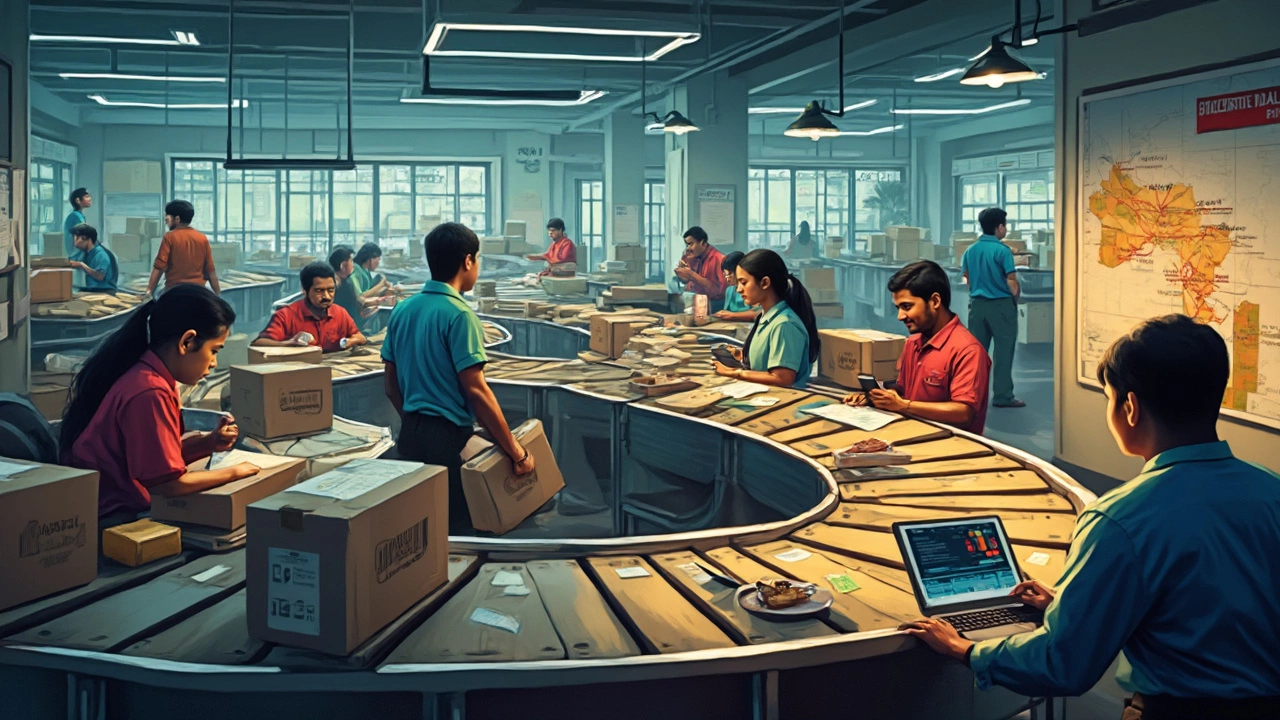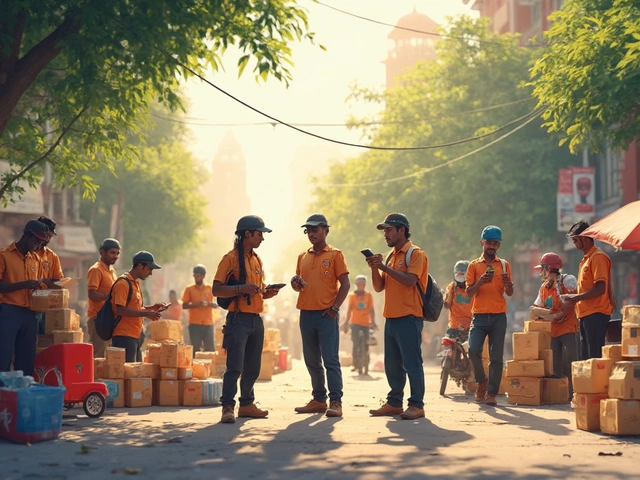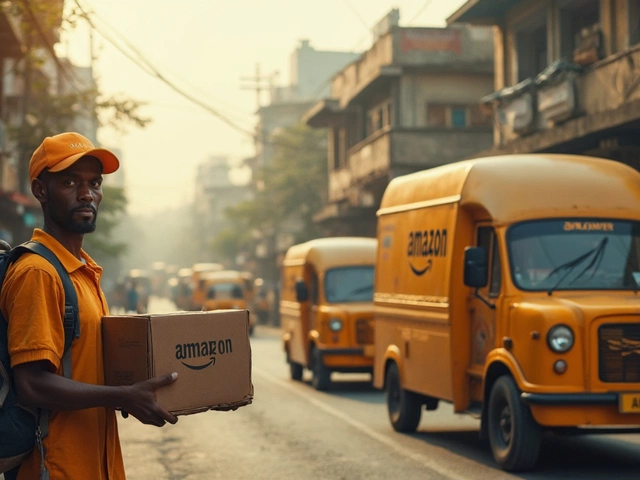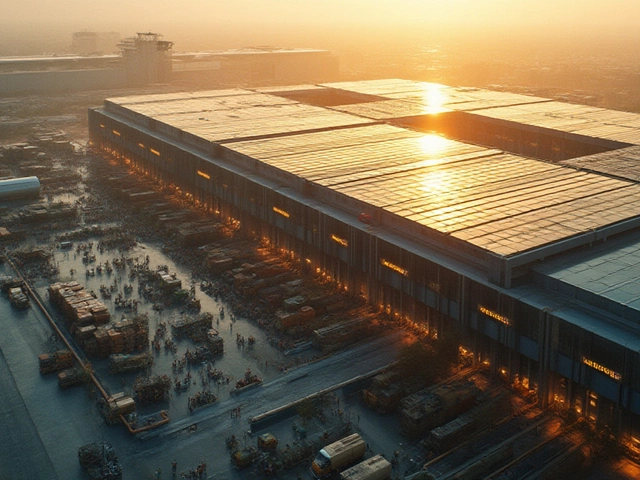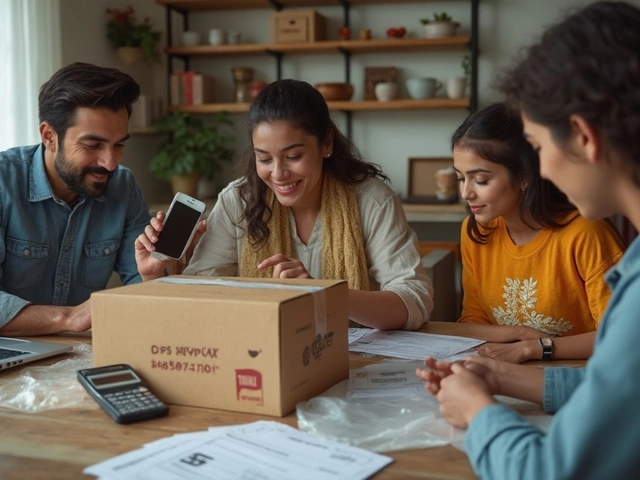A lot of people think couriers just drive around all day dropping off boxes, but there’s a lot more going on behind the wheel. When you book a courier, you’re kicking off a process that depends on speed, coordination, and accuracy. Packages zip through sorting centers, get loaded for specific routes, and are tracked every step of the way—sometimes down to the minute.
It’s the real-world version of pressing ‘order’ on your screen and expecting something to show up almost magically. But there’s a chain of tasks between you ordering and the knock at your door. Miss a step or lose track of a package along the way, and the whole thing falls apart. The secret sauce these days? It’s not just a GPS app—it’s knowing the streets, managing time like a pro, and handling endless surprises, from traffic jams to grumpy dogs.
If you’re thinking about how courier work happens or maybe want to get started yourself, knowing what really happens out there can make a difference. Ready to see what a day as a courier looks like from start to finish?
- What Does a Courier Actually Do?
- The Delivery Process Step-by-Step
- Tracking, Tech, and Modern Tools
- Tips for New Couriers and Customers
- Surprising Realities and Industry Trends
What Does a Courier Actually Do?
Some people picture couriers as just drivers or bikers, but their job is a lot more hands-on than that. The main thing a courier does is get packages, documents, or groceries from one spot to another, safe and fast. They work with all kinds of items—medical samples, retail orders, legal documents, you name it—and every day isn’t the same. Timing matters big time, so couriers have to plan their routes, keep an eye on traffic, and sometimes juggle a dozen deliveries on a tight schedule.
Here’s what the typical workday includes:
- Picking up packages from businesses, warehouses, or private homes.
- Sorting deliveries if they aren’t organized yet, since courier work often means handling multiple jobs at once.
- Planning routes using phone apps or old-school maps to save time and avoid delays.
- Delivering packages to homes, offices, or stores and sometimes snapping photos or getting signatures as proof.
- Double-checking labels and paperwork so nothing ends up at the wrong place.
Some couriers go solo, while big delivery companies use whole teams and state-of-the-art tracking tech. Fun fact: FedEx processes over 15 million shipments worldwide every single day. Even smaller local services race to fit in dozens or even hundreds of stops daily.
Take a look at what types of items couriers deliver most often:
| Type of Item | Common Use |
|---|---|
| Medical Samples | Hospitals, Labs |
| Retail Packages | Online Shopping Deliveries |
| Legal Documents | Court Filings, Law Firms |
| Food & Groceries | Restaurants, Grocery Stores |
| Business Supplies | Office Deliveries |
Lots of couriers now use electric bikes, scooters, or even go on foot for short trips downtown. If you’ve ever seen someone weaving through traffic with a heavy-looking backpack and laser focus, odds are you’ve spotted a courier finding the quickest path through the city jungle.
The Delivery Process Step-by-Step
Here's what really happens from the minute you hit "send" on your order to that final doorstep delivery. It’s not just one person handling your package. There’s a team effort behind every drop-off. Let’s break it down in simple steps, so you know exactly where your stuff is at any time.
- Booking and Pick-Up: It all starts when you book a courier. Some systems use apps, some just need a phone call—either way, your package gets logged with a tracking number. A courier gets assigned the job and heads out for pick-up. If you’re sending something same-day in a big city, chances are your pick-up will happen in less than 60 minutes.
- Sorting and Routing: After pick-up, bigger couriers (the FedEx and DHL types) sort packages at a local warehouse or hub. Smaller outfits might skip this and go straight to delivery. Packages are weighed, scanned, and sorted for the fastest routes. Sorting centers can handle thousands of parcels an hour with conveyor belts and barcode scanners. This is where your package’s label gets read by machines or by hand, depending on volume and tech.
- Loading Up: Couriers—or sometimes dedicated drivers—load up their vehicles for set delivery zones. The route is planned through mapping apps, but experienced drivers often tweak it on the fly, knowing shortcuts or traffic patterns. Fun fact: The average courier makes between 75 and 120 stops a day in a city.
- On the Road: This is the hustle part. Couriers follow the planned route but have to react to real-time stuff—accidents, roadwork, sudden weather, or building security. Most use tracking apps so dispatch knows where everyone is. Some companies even rate couriers on speed, accuracy, and delivery window hits.
- Final Delivery and Proof: Your package arrives at the address, and the courier takes a quick photo or collects a signature for proof. Some places use PIN codes or QR scans. Delivery is logged instantly, and you get a notification or email. For businesses, signed delivery proofs are required for big-value items, while home deliveries usually settle for a photo on the doorstep.
Here's a table to give you a sense of how fast things can move these days, especially for courier work in major cities:
| Step | Average Time (Urban, Same-Day) |
|---|---|
| Pick-Up | 30-60 minutes |
| Sorting/Labeling | 15-45 minutes |
| Transit/Delivery Route | 1-5 hours |
| Final Drop-Off | Instant once at address |
Stuff happens fast thanks to all the smart tech and planning. If your package seems late, odds are something out of the courier’s control—like weather or a closed gate—got in the way. You can check tracking for the latest updates, but most times, the process runs like clockwork behind the scenes.
Tracking, Tech, and Modern Tools
If you’ve tracked a package online and seen those minute-by-minute updates, you’re watching some pretty cool tech in action. Behind every scanned barcode is a system that helps both the courier company and the customer stay on top of the game. Most major companies use handheld scanners—think chunky phones that beep a lot—to log pick-ups, scan deliveries, and snap proof-of-delivery photos right at your door. That means less paperwork, fewer mistakes, and instant updates.
Drivers are usually hooked up with GPS navigation, route optimization apps (like Circuit or RoadWarrior), and real-time traffic reports. These tools help plan smart routes so less time gets wasted doubling back. Some systems even re-route deliveries automatically if a package gets delayed or new stops pop up. No joke, a 2024 industry study found that using route optimization tech can cut delivery times by as much as 22%.
Another big shift: contactless delivery. During and after the pandemic, folks got used to digital signatures or photo confirmation instead of scribbling on a keypad. Now, more than 68% of courier services offer this by default. The tech makes things not just faster, but way safer.
Here’s a quick look at the gear and gadgets that couriers rely on every day:
- Handheld scanners: For tracking and proof-of-delivery
- Smartphones/tablets: With apps for updates, navigation, and communication
- Dashcams: For insurance and safety
- Digital signature & photo tools: For contactless updates
- Barcode printers: For creating labels on the fly
Just to give you an idea of how tech shapes courier work today, check out this comparison of old-school vs. modern tools:
| Feature | Old-School Couriers | Modern Couriers |
|---|---|---|
| Package Tracking | Manual logs, phone calls | Real-time online updates |
| Navigation | Maps, local knowledge | GPS, route optimization apps |
| Delivery Proof | Paper signatures | Digital signatures, photos |
| Communication | Dispatch radio, notes | Messaging apps, push notifications |
| Customer Updates | Rarely notified | Automated ETA, live tracking |
Bottom line: being a courier doesn’t mean you need to be tech genius, but being comfortable with these tools can make the job a whole lot smoother. If you’re a customer, this tech means you pretty much always know when your stuff’s coming, and if anything changes, you’ll hear about it fast.
Tips for New Couriers and Customers
Let’s get real: starting out in courier work is a hustle. If you’re new on the job, the first thing to know is that time matters more than anything. Most companies expect deliveries within tight windows, so every minute counts.
- Learn your local routes: The fastest couriers aren’t just relying on Google Maps. They know shortcuts, traffic patterns, and which streets are nightmares at rush hour.
- Take care of your vehicle: If you’re using your own car or bike, keep it in top shape. Breakdowns mean lost pay—and annoyed customers.
- Stay organized: Start every shift with your phone charged, a map ready, and stops planned. Group deliveries by area to save fuel and time.
- Communicate clearly: If you’re running late or can’t find a place, call ahead. Customers appreciate a heads-up way more than excuses later.
- Always double-check addresses and packages: It’s easy to grab the wrong parcel when things get busy. A quick check saves a world of hassle down the line.
If you’re the customer, you can make things easier for the courier (and get faster service) with a few simple steps:
- Use exact addresses. Throw in the building name or floor if you can.
- Keep your phone nearby in the delivery window. A missed call can mean a missed package.
- Give clear delivery instructions. If the entrance is hard to spot or there’s a gate code, let the sender or courier know upfront.
- Track your package. Modern apps make it dead-simple to see when your order is nearby—don’t wait for that doorbell surprise.
Here are some real numbers that show why these small actions make a big dent in delivery success rates:
| Action | Impact on Delivery Success Rate |
|---|---|
| Providing clear instructions | +15% |
| Answering courier calls | +22% |
| Grouping deliveries by route | –30% in time per delivery |
| Regular vehicle maintenance | –10% breakdown risk |
One quick tip: the best couriers tend to have backup supplies in their car—think marker pens for labeling, a rugged phone charger, snacks, and spare gloves for weird weather. Those tiny things add up during a long shift.
Bottom line? A little prep and good communication go a long way in courier work, whether you’re handing off a package or racing against the clock to get it there.

Surprising Realities and Industry Trends
People don’t always realize just how competitive it is out there for couriers. It’s not just about speed—safety and accuracy matter even more now. Delivery companies are setting tougher rules for package scanning, customer proof, and on-time rates. If a courier misses a scan or drops off a package at the wrong spot, it’s usually flagged by software and shows up in their performance reviews.
Tech has made the biggest impact. A few years back, couriers juggled paper logs and hand-written notes. Now, most companies use real-time package tracking, driver apps, and instant communication to cut mistakes and delays. Customers expect to watch their package move down the street on their phone. Some places are even testing delivery robots and drones—like what Amazon started in a small Texas neighborhood—with mixed results so far.
One of the biggest changes: demand for same-day and express delivery. People got used to fast shipping during the pandemic, and that isn’t going away. Companies are hiring more freelance couriers and using local shops as mini-warehouses to speed things up. Even small businesses can offer one-hour delivery with the right courier partner now.
- According to the Bureau of Labor Statistics, delivery jobs grew 33% from 2019 to 2024, outpacing most other gig-economy work.
- Some couriers cover over 100 miles in a single shift, often facing traffic, weather, and unexpected stops.
- Package theft ("porch piracy") led to new industry rules—now, most couriers have to snap a time-stamped photo when they drop off a parcel.
It can look easy on the outside, but the life of a courier work runs on constant hustle. Fast service, high tech, and changing customer expectations push the industry forward. If you’re working as a courier or just waiting for a package, those changes shape your day whether you notice them or not.
